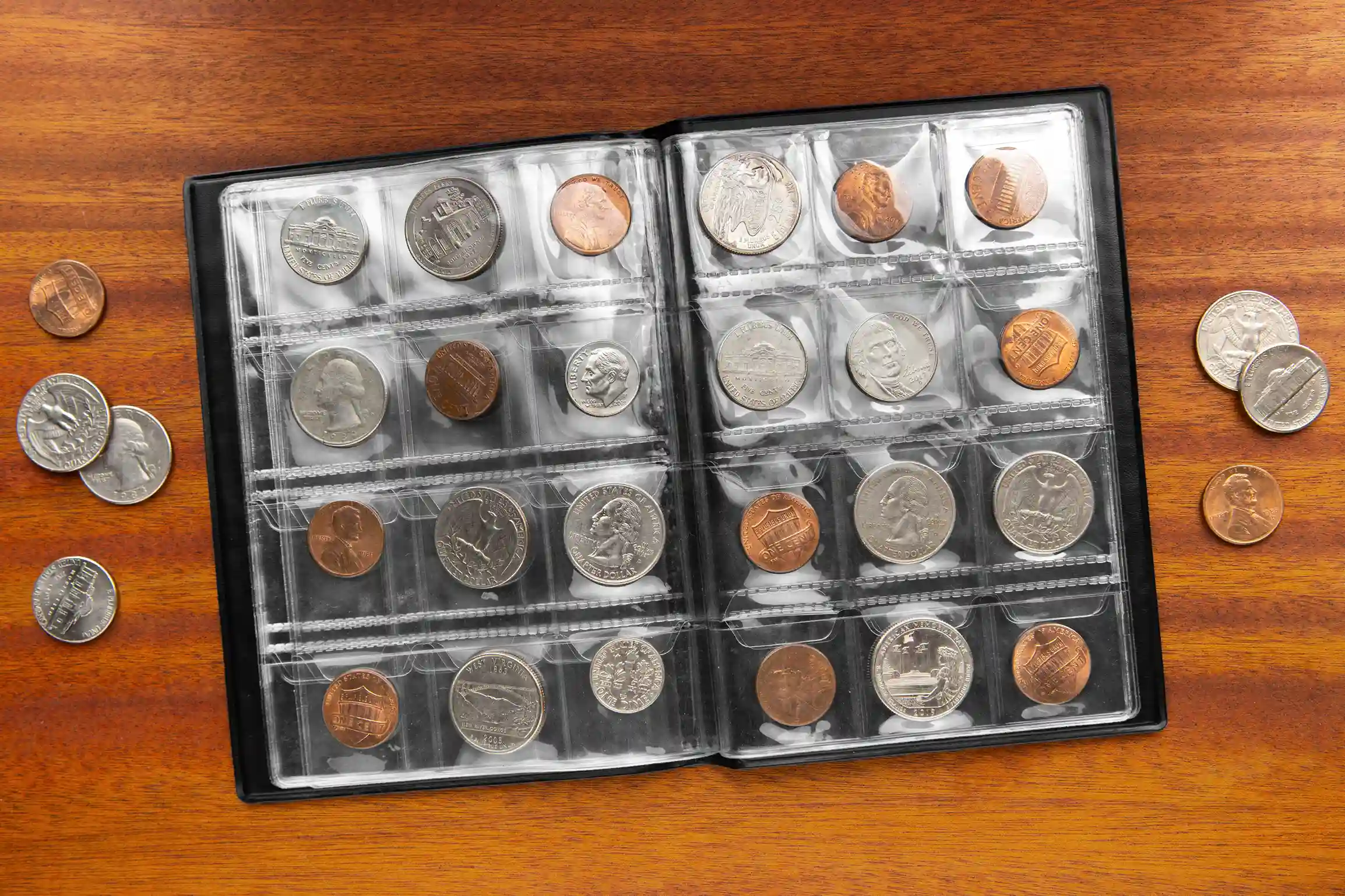U.S. Dimes: History, Key Dates & Collecting Strategies
Dimes hold a special place in American numismatics, as they combine historical significance, artistic beauty, and surprising rarity in small packages. From early colonial precursors to modern commemoratives, these 10-cent pieces offer collectors diverse opportunities.
This guide explores the complete evolution of U.S. dimes. What are valuable key dates? How much is a dime worth today? And are there any expert collecting strategies?

Historical Evolution of U.S. Dimes
1. Pre-Federal Issues (Pre-1796)
Colonial "Dismes": The 1792 "Birch Cent" pattern included experimental dime prototypes.
No Mass Production: Early U.S. Mint focus was on higher-denomination coins.
2. The Draped Bust Era (1796–1807)
Design: Small eagle (1796–1797) → Heraldic eagle (1798–1807).
Rarity: 1796 (first year) and 1797 (no stars) are ultra-keys.
3. Capped Bust (1809–1837)
Major Varieties: Large (1809–1828) vs. small diameter (1828–1837).
Key Date: 1822 – Only ~100 survive (PCGS estimates).
4. Seated Liberty (1837–1891)
Subtypes: No stars (1837–1838), stars (1838–1860), legend (1860–1891).
Notable Rarity: 1873-CC "No Arrows" – Only 12,400 minted.
5. Barber (1892–1916)
Design Controversy: Public criticized Charles Barber’s "bland" motifs.
Sleeper Rarity: 1894-O – Mintage 720,000, but high attrition.
6. Mercury (1916–1945)
Misnamed Design: Winged Liberty head mistaken for Roman god Mercury.
Key Dates: 1916-D (264,000 minted), 1942/1 overdate.
7. Roosevelt (1946–Present)
Modern Rarities: 1982 no-mintmark (Philadelphia error), 1996-W silver proof.
Top 10 Most Valuable Dimes (2024 Valuations)
Coin | Mintage | Graded Value (VF-20) | Graded Value (MS-65+) |
1796 Draped Bust | ~22,000 | $15,000+ | $250,000+ |
1873-CC No Arrows | 12,400 | $5,000+ | $150,000+ |
1894-S Barber | 24 | $2M+ (all specimens) | N/A |
1916-D Mercury | 264,000 | $1,000+ | $20,000+ |
1942/1 Mercury | Unknown | $500+ | $15,000+ |
1975 No-S Roosevelt | 2 known | $500,000+ | N/A |
1982 No-P Roosevelt | Unknown | $200+ | $2,000+ |
1996-W Roosevelt | 1,457,000 | $15+ | $150+ (silver proof) |
Underrated Dimes with Strong Potential
1. Semi-Key Dates Flying Under the Radar
These dimes aren’t the rarest, but they have strong upside due to collector demand outpacing supply:
1838-O Seated Liberty (No Stars) – First year of New Orleans Mint dimes; only 406,000 minted.
Value: $250 (VG-8) to $5,000+ (MS-63)
1905-O Barber – Low-mintage (2.8M) issue with weak strikes; tough in AU+.
Value: $30 (G-4) to $1,200 (MS-65)
1931 Mercury – Final year of low-mintage (3.15M) before Great Depression cuts.
Value: $5 (G-4) to $600 (MS-66 FB)
2. The "Blue Uncirculated" Sleepers
Certain common-date dimes are undervalued in pristine grades because few survived without wear:
1941 Mercury (Philadelphia) – Millions minted, but fewer than 200 graded MS-67+ FB.
Value: MS-67 FB = $300 vs. MS-65 FB = $50
1964-D Roosevelt – Last 90% silver dime; hoarded but high-grade gems are scarce.
Value: MS-67 = $150 (vs. $8 for circulated)
Error Dimes Worth Hunting For
1. Major Mint Mistakes
1968 No-S Roosevelt Proof – Only 2 confirmed; last sold for $25,000 (PR-65).
1982 No-P Roosevelt – Missing Philadelphia mintmark; $500+ in AU condition.
1990-P "No S" Proof – Unofficially estimated <50 exist; trades for $3,000+.
2. Dramatic Die Varieties
1942/1 Mercury Overdate – Visible "1" under the "2"; $1,500+ in XF.
1964 "DDO" Roosevelt – Strong doubling on "IN GOD WE TRUST"; $200+ in MS-64.

Smart Collecting Strategies
1. The "Roll Hunting" Approach
Focus: Search uncirculated silver Roosevelt rolls (1946–1964) for:
Full bands (sharp horizontal lines on torch)
Toned coins (naturally rainbow-hued examples)
Profit Potential: A single MS-65 FB dime can cover the cost of an entire $100 roll.
2. Building a "Type Set Plus" Collection
Instead of just one example per design, add:
Major subtypes (e.g., 1838 No Stars + 1840 Stars Seated Liberty)
Key mintmarks (e.g., 1916-D + 1921-P Mercury)
Notable errors (e.g., 1964 DDO + 1982 No-P Roosevelt)
3. Targeting CAC-Stickered Coins
Why? Coins with green/gold CAC stickers consistently outperform non-stickered examples at auction.
Example: A CAC-approved MS-65FB Mercury dime sells for 20–30% more than a raw coin.
Market Outlook & Investment Tips
Silver Dimes (1946–1964): Trading at 15–18x face value (bullion-driven), but gem examples have 3–5x melt value.
Mercury Dimes: Strong demand for FB-graded coins; registry set competition is heating up.
Barber Dimes: Still undervalued compared to quarters/halves; XF-AU examples are ripe for appreciation.
Collecting Strategies for Different Budgets
1. Type Collecting (Entry-Level: $500–$2,000 Budget)
Goal: One representative from each major series.
Focus: Lower-grade examples of rare types (e.g., VF Barber, AG Seated Liberty).
2. Date/Mintmark Sets (Intermediate: $5,000–$20,000 Budget)
Top Picks: Mercury dime series (minus 1916-D), Roosevelt silver proofs.
Pro Tip: Target CAC-approved coins for better liquidity.
3. Condition Rarity (Advanced: $50,000+ Budget)
Opportunities: MS-65+ Barber dimes, Full Bands Mercury dimes.
Market Insight: Registry set competition drives premiums for top-tier coins.
Grading & Authentication Insights
Mercury Dimes: "Full Bands" (FB) designation requires complete horizontal lines on fasces.
Barber Dimes: Look for sharp cheekbone detail on Liberty’s profile.
Counterfeit Risks: 1894-S and 1916-D are heavily faked—always buy certified.
Market Trends & Investment Outlook
Strong Segments: Mercury dimes (+18% value growth since 2020, NGC data).
Undervalued: Mid-grade Seated Liberty dimes (potential 5–7% annual appreciation).
Liquidity Note: Roosevelt proofs trade near melt unless top-grade or errors.
Why Collect Dimes?
Historical Depth: Span from the Federal period to space-age commemoratives.
Affordable Rarity: Key dates exist even for modest budgets (e.g., 1949-S Roosevelt).
Portfolio Diversification: Precious metal (90% silver) and numismatic value combined.
Next Step: Prioritize PCGS/NGC-certified coins and consult recent auction archives (Heritage, Stack’s Bowers) for precise valuations.
-

How to Clean and Maintain Your Ski and Snowboard Goggles for Longevity
Skiing and snowboarding are exhilarating winter sports that attract millions of enthusiasts each year. To fully enjoy these activities, having the right gear is essential. One crucial piece of equipme...
-

Safety in Winter Mountains: Sports Gear and Location Tracking Apps
Discover how to stay safe in the winter mountains with our guide to essential sports gear and location tracking apps. Explore top recommendations to ensure a secure and enjoyable outdoor adventure at ...
-

Explore Backcountry Skiing: Safety Tips and Equipment Essentials
Explore practical tips and must-have gear for safe backcountry skiing adventures. Learn how to stay prepared and make informed decisions in the wilderness with GlacierGear. ...
-

U.S. Dimes: History, Key Dates & Collecting Strategies
Discover the most valuable U.S. dimes, from 1796 Draped Bust to modern errors. Learn grading secrets and investment strategies for all budgets....